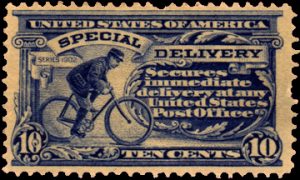Urban sprawl has negative impacts on human health. The extension of suburbs from US urban centers has increased dependence on automobiles, resulting in the production of air pollutants and contributing to respiratory problems in people of all ages. In the fifty largest US cities, commuters pay an additional $107 billion dollars a year in travel costs and time as they drive between their work and home.
In order to understand urban sprawl in American cities, however, we have to understand the bicycle. This may seem like an odd assertion, given the current status of the bicycle as a potential solution to urban health and environmental issues. But the bike was what first gave the human spirit the first real taste of freedom in personal mobility. Before the automobile, it allowed people to escape the noise, crowds, crime and other problems associated with city centers.

As a society, we have come to regard the bicycle as a viable solution for long commutes, traffic congestion, pollution and even obesity. Urbanization, and our fear of sprawling cities and the vulnerabilities associated with that growth, has created a culture where we now praise the cyclist for utilizing a self-powered mode of transportation that is not the automobile.
Despite its potential to solve public health and environmental issues in urban cities, though, we cannot totally exonerate the bicycle’s history as a player in the creation of sprawl.
A brief ride through history can help us to explore the bike’s evolution from two-wheeled vehicle and hobby, to a modern, eco-friendly, mobility solution.
Escaping the City: Pre-WWI
Bicycles were first introduced to America in the late 19th century. They became widely manufactured in a competitive market, appealing to Americans who utilized the bike to travel long distances. As bicycles continued to rise in popularity at the turn of the century, a number of factors contributed to bike owners traveling outside urban centers:

- The creation of roads contributed to increased accessibility beyond the city. Avid bike riders were the first advocates for road enhancements to improve the cycling experience. For cycling to be enjoyable, roads that could be traversed with ease were in high demand. The League of American Wheelmen actually pushed for a federal highway program as early as the 19th century.
- The aesthetic views outside the city have always drawn city dwellers out of the city. City life in the 18th and 19th century was not like it is today. The ability to escape on a bike from dirty, overcrowded streets, industrial pollution and the speed of urban life was extremely appealing. Views outside the city were a sharp contrast to city sights, and new technology, such as the camera, made it possible for cyclists to capture their trips into the country.
- A tourism culture among cyclists evolved as well. Bicycling beyond city boundaries exposed cyclists to new cultures and people not found in cities.
Shifting Gears: Post WWI to the 1950s

The First World War was a pivot point for the bicycle because it catalysed the transition to the automobile. The ability to own a car decreased the demand for bicycles. With the advent of Henry Ford’s Model T Ford, the ability of Americans to liberate themselves from urban centers stretched further. Roads became a necessity in automobile mobility, and car rides into the countryside became more common. It was the beginning of both the American dependency on the automobile, and the start of suburbanization.
The 1950s saw the rapid suburbanization of America. Interestingly, scenes of children riding their bikes on the streets are often associated with suburban life. Cars were for adults who needed to drive in and out of the city, and bicycles were now marketed for children. All ages now had their own form of transportation.
Children’s Toy to Zero-Emissions Savior
The last sixty years in the US have been marked by dynamic trends of suburbanization, urbanization, reurbanization, and counterurbanization. The constant factor in the midst of this change has been America’s reliance on the automobile. In response, the reintroduction of the bike in the 1970s in what has been called the “bicycle renaissance“of western society is both timely and critical.
The bicycle offers several advantages that should be embraced as American cities adopt the term “resilience.” They are inexpensive to purchase and maintain, require less infrastructure than cars, and do not contribute to congestion. Not only do they improve physical health, but they also reduce public health impacts as a zero-emissions mode of transportation.
Although the bike paved the way for the automobile, and helped to accelerate urban sprawl, its utility has been unceasing. It is up to us to steer away from car-dependency and see that our role on the bicycle is to be an engine of change, and we can help fight the effects of sprawl.
